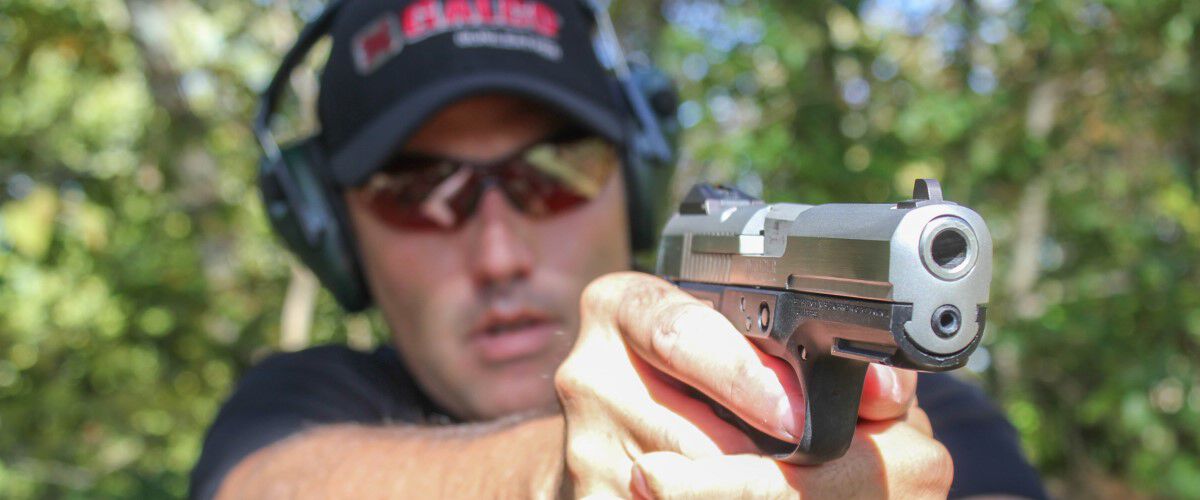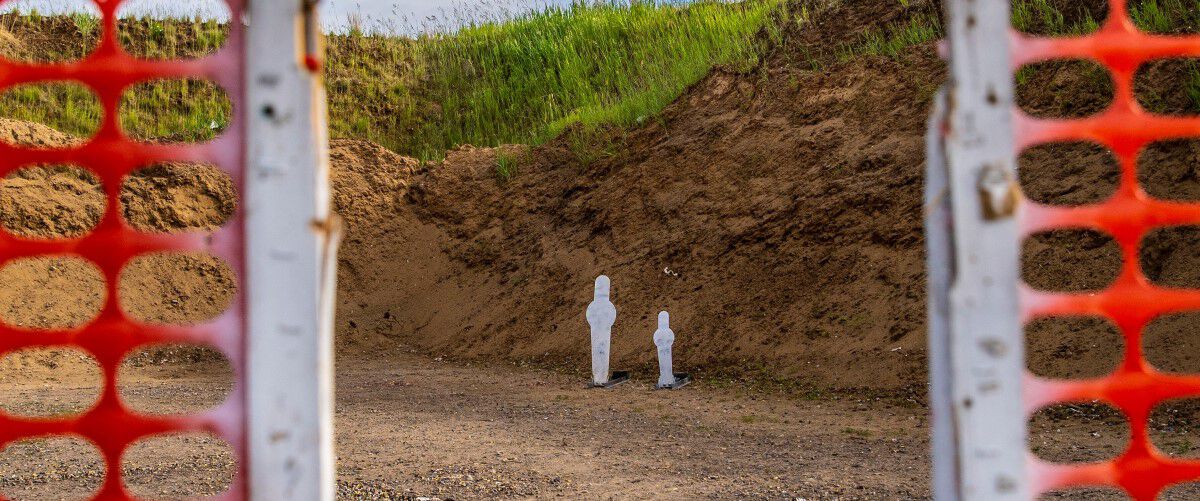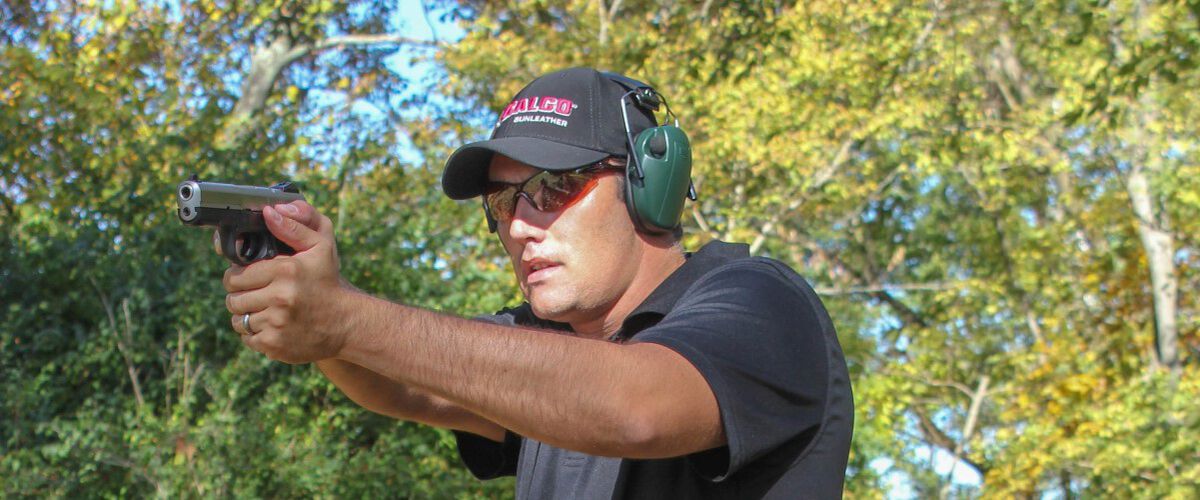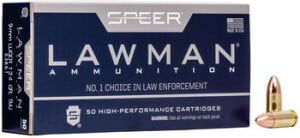Make Your Move
By Brad Fitzpatrick

There are more than 12 million new gun owners in America, and most of them have purchased a semi-automatic pistol for self-defense. New shooters like these obviously need to learn basic firearms skills including safety, loading and unloading, how to shoot, and how to secure their firearm. But one practical skill that’s often overlooked is the ability to move and shoot. Even experienced shooters need to practice movement drills, and the skills might prove critical to surviving a gunfight.
Why is movement so important? First, it makes you a more difficult target to hit, and if you’re skilled at moving and shooting while your assailant is standing in one place, that’s a major advantage for you. Personal protection is all about stacking the odds in your favor, and simply learning to take a few steps while you shoot can go a long way toward surviving a violent encounter.
Second, moving lets you to reach protective cover. If you’re able to move and shoot you stand a chance of placing a hard barrier between you and your attacker which might keep you from being shot, or let you escape the situation entirely.
Drill Types
Start simply with your movement drills. Select an area that is flat and free of debris or items that might trip you while you shoot. Begin with an unloaded pistol and dry fire while you move two steps forward and two steps backward. Vertical drills (which take you toward or away from the target) are easier for the beginning shooter than horizontal drills, but these two routines will provide the important foundation upon which you build more advanced skills later.
When you’re comfortable with the drills and the firearm you can add live fire. One key to movement drills is to remain target-focused while you move. Take medium-length, positive steps—no hopping, shuffling, or jumping. By taking positive steps you’re less likely to fall. Bend at the knees and remain in an athletic stance to maintain balance.

If you’re having trouble with horizontal drills, slow things down. Take a step, shoot, and take another step. One of the primary mistakes most new shooters make is trying to move too fast too quickly. Learning movement is much like learning to dribble a basketball in that it requires coordination and movement of both the hands and feet while maintaining focus, so consider the progression you’d expect from a new basketball player when adding movement drills. First, learn the mechanical component and then add movement slowly. The goal in basketball is to move quickly and with confidence and control the tempo of the game. The objective with movement drills in shooting is similar except you’re taking charge of the encounter and finding the best solution to save your life.
Moving On
When you’ve learned to stay low, remain target focused, and take positive vertical and horizontal steps, you are foundationally ready to move onto more complex drills. Until these skills are mastered, it’s best to run drills with your pistol already in hand, but when you feel you have succeeded at learning the basics, add drawing the firearm to the sequence. Remember to clear the garment if you have cover clothing, position your hand high on the pistol, keep the free hand out of the way and then push the gun out from the core of the body if you have time to do so (in real-world violent encounters, you might not be able to extend your arms fully before firing if your attacker is close). Only when you feel comfortable with the draw while taking one step should you move to taking two steps. Remember you are building your foundation and it must be built correctly. Bad habits will develop when you don’t give yourself time to master these foundational elements.
From there you can advance as you feel comfortable. Move more quickly, set up cover points that are farther away, move vertically, and so forth. Just remember moving too quickly (literally and figuratively) can cause bad habits and can be dangerous. If you want to add even more complexity, try to shoot a moving target. The fastest and easiest way to do this is to hang a few balloons tied to light string on your target backing during a windy day. The balloons will be moving and so will you, so hitting them requires practice and skill.
Keep Drilling
In addition to the floating balloon drill, I also like to create my own “workout plan” for movement drills. For example, I move fairly well to my right but struggle mightily when moving to my left and shooting targets, and for that reason one of my favorite drills early in the shooting session is a slow/fast left-moving Mozambique drill. This requires me to draw while moving to my left and then fire two shots to the target’s chest/torso and one to the head. The first time I run the drill, I do it slowly then progress faster.

I also like to practice shooting from the ground (where safe—be certain your backstop will effectively stop a bullet passing through the target at a steep angle). The reasoning behind this is clear: while I’m moving, and especially if someone if shooting at me, I might trip and fall. If that happens, I want to be comfortable shooting off the ground.
You’ll develop your own drills based on your needs. Poor accuracy is a good indicator you are moving too quickly, so if you suddenly find you aren’t hitting the vitals, slow things down. Eventually you’ll feel comfortable, and it might become second nature. That’s good. If you’re ever in a violent encounter, you want every possible advantage, and moving is a major one.
Lawman
Train with ammunition that not only offers superb consistency but also feel and point of aim that are virtually identical to self-defense loads.
Buy Now